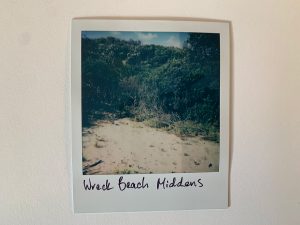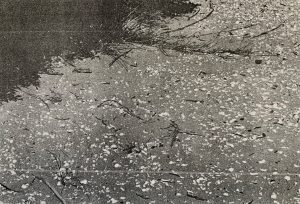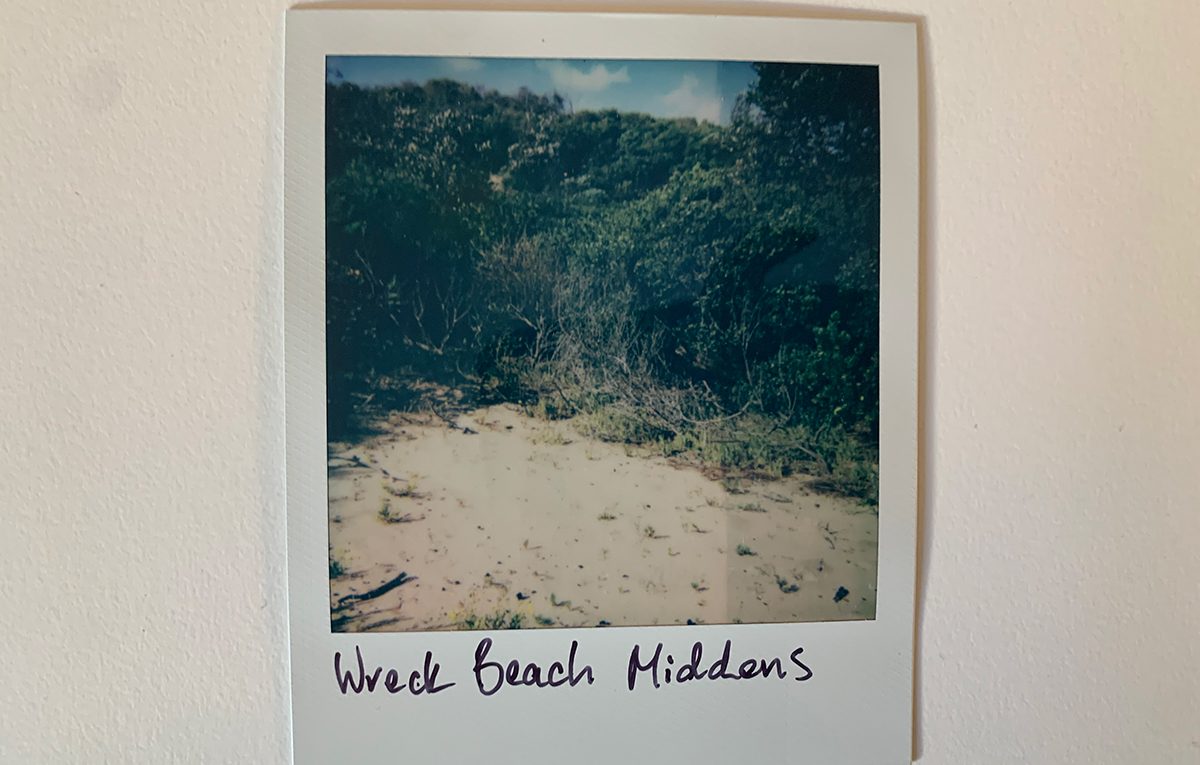The Middens of Wreck Beach

The marine park that Wreck Beach now inhabits that strip of coast is named for the Aboriginal custodians of these lands and waters, the Yallock-Bulluk of the Bunurong/Boonwurrung. It’s likely that this area of coastline would have frequented by the Bunurong/Boonwurrung from what we know as Springtime, through the summer months, and into Autumn. It would have been a place with a relative abundance of food, especially given the rock platforms at Wreck Beach are laden with inter-tidal shellfish. The constantly shifting dunes around Wreck Beach host countless middens that teem with layers of charcoal and bleached shell fragments from generation upon generation of Bunurong feasts.[1]

The Bunurong/Boonwurrung suffered terribly from European contact and settlement. Sealers and whalers were working this area at the turn of the nineteenth century – Lieutenant Murray explored the area in the ‘Lady Nelson’ and reported the presence of sealers in Westernport Bay in late-1801. The theft of women, the introduction of diseases and violence – from both Europeans but also from the Gunaikurnai people to the East wreaked catastrophic destruction on the Bunurong/Boonwurrong. As such, there is very minimal material and mention of them (at least) in the colonial archives from the time. Samuel Anderson (who settled at Bass in 1835) didn’t keep a formal diary. The journals of William Thomas, who was Assistant Protector of Aboriginals in the Western Port region, provides a key resource, but reading his notes, one is struck by notable lack of presence of the Bunurong/Boonwurrung. Writing in 1840, William Thomas noted that the settlement of Melbourne had “decimated the Bunurong People”.
Despite this horrific voilence and the ongoing injustice of colonisation the Bunurong/Boonwurrung have shown remarkable strength, endurance and resilience to maintain their vibrant cultural practices. The bleached shell fragments and layered charcoal that still peaks through the sands of this coastline tell of the vibrant connection shared between the Bunurong/Boonwurrung and these lands and waters.
Notes
[1] Archaeological analysis of Bunurong middens includes: Denise Gaughwin, 1984, ‘The Artefact’ 9 (1-4): 23-8, Dept Pre-History, LaTrobe University; Denise Gaughwin & Gabrielle Brown, ‘Stinker Bay Shell Museum’ in Archaeology in Oceania 21 (1986), Dept of Archaeology, LaTrobe University Denise Gaughwin & H Sullivan, ‘Aboriginal Boundaries and Movements in Westernport, Victoria’ in Aboriginal History 8 (1): 80-98 (1984)
[2] Could add detail from Middens guidebook.
